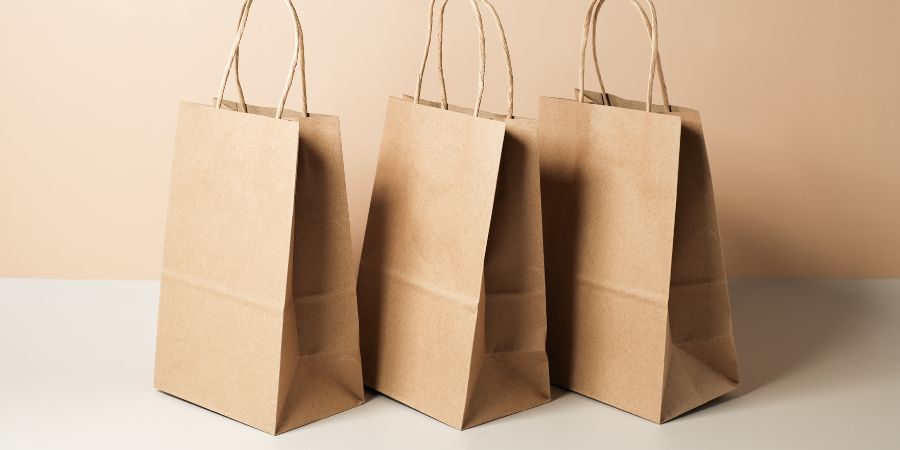If you are looking into food storage and organization, you may have already seen mylar bags. These shiny, crinkly storage bags aren’t just for hardcore survivalists or people building doomsday bunkers; they’re actually one of the most practical tools you can have in your home.
The problem is, a lot of people toss some rice in a bag, seal it up, and think they’re good for the next 25 years. That’s not how it works. If you want to get the full benefits of mylar bags, you’ve got to know how to use them the right way. So, let’s find out together!
- What Are Mylar Bags?
A mylar bag is a pouch or a bag made from a special type of polyester film. It’s lightweight and it blocks oxygen, light, and moisture. That’s what makes it so useful for long-term storage.
They usually come in different thicknesses (measured in mils) and sizes, from small snack pouches all the way to big 5-gallon liners that fit inside food buckets.
- Main Uses for Mylar Bags
You can use mylar bags for all sorts of things, including the following:
- 1. Long-Term Food Storage
Dry goods like rice, beans, flour, pasta, oats, and powdered milk all do really well in mylar bags when paired with oxygen absorbers. Stored properly, these foods can last for years, even decades.
- 2. Emergency Preparedness
Mylar bags help you pack 72-hour food kits and stock for the long haul. They keep your food safe from moisture, critters, and even weird pantry smells.
- 3. Camping and Outdoor Adventures
Don’t want your trail mix turning into mush when it rains? Toss it in a small mylar bag. They’re durable, lightweight, and resealable options that make life easier outdoors.
- The Benefits of Using Mylar Bags
Why choose these bags?
- Long shelf life: Properly sealed, food in mylar can last 10–25 years, depending on the type.
- Moisture barrier: Unlike regular plastic bags, mylar is practically airtight.
- Protection from oxygen: Oxygen is the enemy of freshness. Mylar combined with oxygen absorbers keeps it out.
- Pest protection: Mice might chew through cardboard, but they’ll have a much harder time with thick mylar.
- Light protection: UV light breaks food down faster; mylar blocks it out.
- Best Practices: Expert Tips for Getting It Right
Here’s where most people slip up. They think sealing food in mylar bags is foolproof, but there’s an art to doing it correctly. Let’s go through the main tips.
- 1. Use Oxygen Absorbers – And Use the Right Amount
If you’re storing dry foods, oxygen absorbers are your best friend. They come in different sizes (measured in cc’s), and you’ll want to match the size of the absorber to the size of the bag and the food type. As a quick rule of thumb:
- 1-quart bag = 100cc absorber
- 1-gallon bag = 300–500cc absorber
- 5-gallon bag = 2000cc absorber
Skip the absorbers, and you’ll end up with stale food or worse – bugs.
- 2. Stick to Dry Goods
High-moisture or high-fat foods (like fresh fruit, cheese, or nuts) can go rancid regardless of where you store them.
Stick to dry items like rice, beans, flour, oats, and pasta for long-term storage.
- 3. Seal Bags Properly
A sloppy seal ruins everything, leading to food waste. You don’t need expensive gear, though. A household iron or hair straightener does the trick. Just press down firmly along the edge until you get a clean, airtight seal. Test it by giving the bag a gentle squeeze; if air escapes, redo it.
- 4. Store Bags in Buckets or Totes
Rodents can still chew through mylar bags if they’re determined. That’s why many preppers put sealed bags inside food-grade buckets with lids.
- 5. Label Everything
It sounds basic, but when you’ve got 20 identical silver bags in storage, you’ll thank yourself for writing “Pinto Beans – Packed 2025 – Expires 2040” with a Sharpie.
- 6. Don’t Rush the Process
When you drop oxygen absorbers into your bags, you’ve got a few minutes before they activate. Have everything ready (bags filled, sealer hot, and labels handy), so you’re not scrambling at the last second.
- Common Mistakes to Avoid
Let’s save you some trouble:
- Overfilling the bag: Leave a little room at the top so you can seal it properly.
- Reusing absorbers: Once they’ve been exposed to air, they’re done.
- Forgetting to check for leaks: Always press-test your seal.
- Storing in hot areas: A mylar bag in the garage in summer won’t last as long as one stored in a cool, dark basement.
- Final Thoughts
Mylar bags aren’t complicated, but using them the right way makes all the difference. You can pair them with the right oxygen absorbers to seal and store them properly; a little bit of care goes a long way.
They can be your secret weapon for food storage, camping trips, or just keeping your pantry under control. Give them a try, and you will realize they are a godsend!



